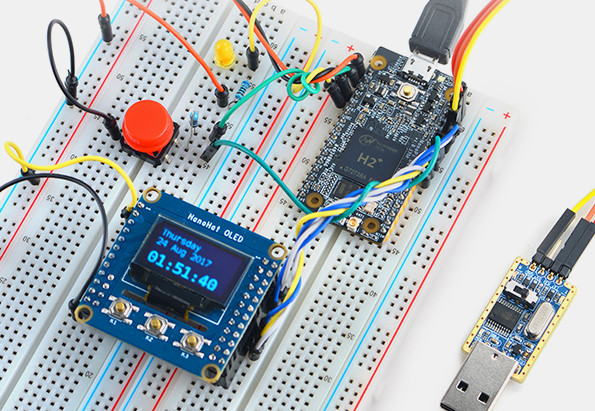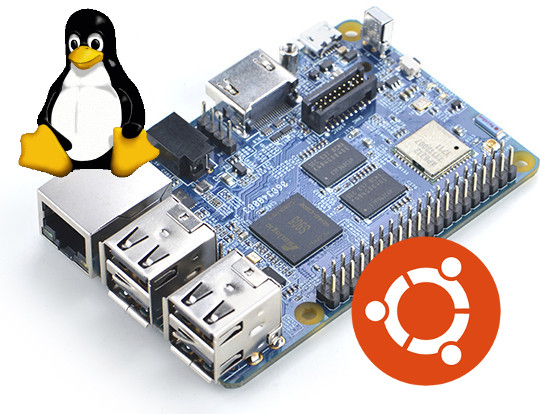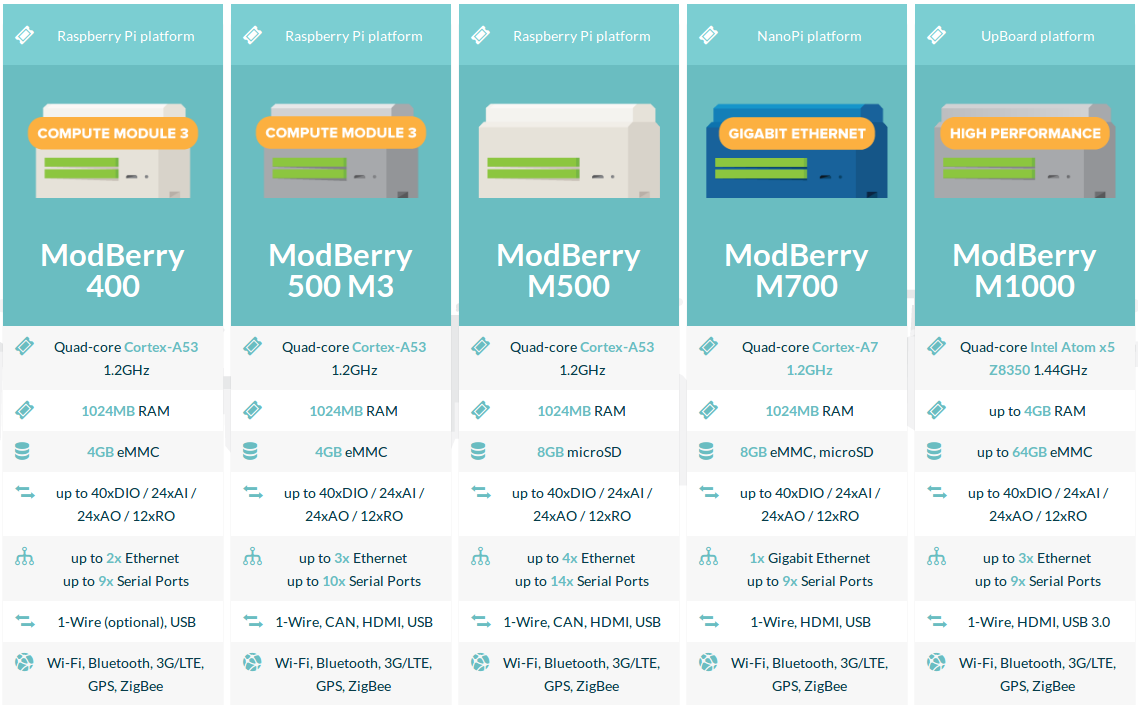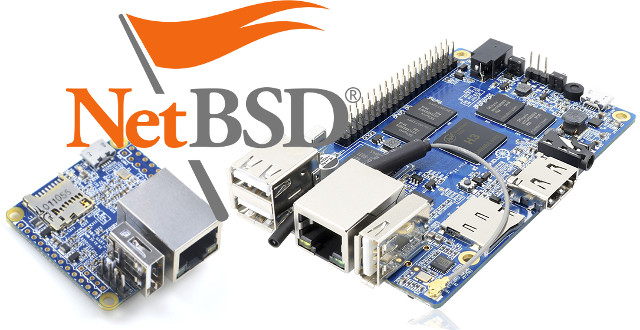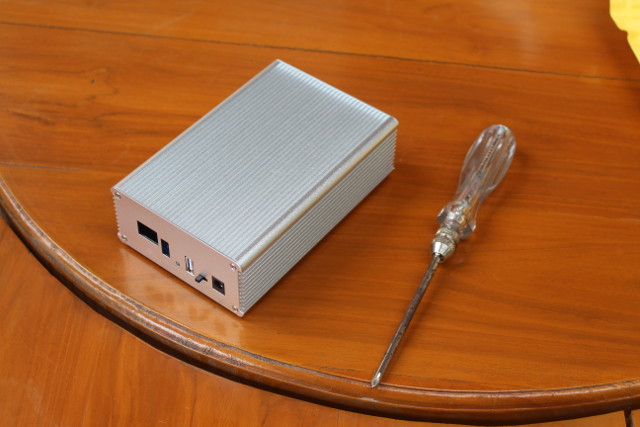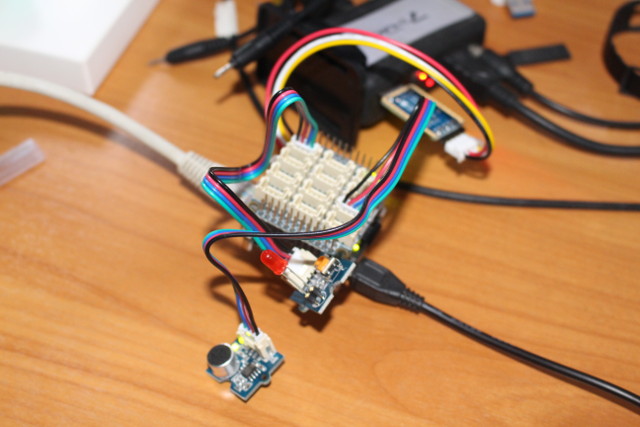It’s very easy to find breadboard compatible boards in the market with products based on Espressif chips such as NodeMCU or ESP32 boards, as well as OpenWrt board like Onion Omega2, or LinktIt 7688. However, it’s much more difficult to find powerful quad core boards in this form factor, but that’s exactly what FriendlyELEC has done with their NanoPi Duo board featuring an Allwinner H2+ quad core processor in a form factor slightly smaller than a Raspberry Pi Zero. NanoPi Duo specifications: SoC – Allwinner H2+ quad core Cortex A7 processor @ 1.2 GHz with Mali-400MP2 GPU @ 600 MHz System Memory – 256 or 512 MB DDR3-1866 SDRAM Storage – micro SD card slot, footprint for SPI flash Connectivity – 802.11 b/g/n WiFi (Allwinner XR819 module) with chip antenna, and u.FL/IPEX connector for external antenna USB – 1x micro USB OTG port Expansion headers – 2x 16-pin breadboard compatible […]
NanoPi K2 Board Gets Ubuntu Core Firmware Image
FriendlyELEC NanoPi K2 is a board powered by Amlogic S905 processor, just like ODROID-C2 board, so while only the Android image was available at launch, it was expected to also support Ubuntu or other Linux distribution shortly after. This was put in doubt by comments on the company’s forums claiming the board would not get Debian images, and only Android was supported. One alternative would be Armbian, but right now they only have ODROID-C2 images for download, no other Amlogic S905 hardware platform is supported either through stable or experimental builds. One user did manage to run Armbian on K2 with balbes150 help, but I’m not sure what’s the status of those firmware. Balbes150 also have a list of image for Amlogic platform in Github, which may be adapted to most hardware by using your board’s device tree binary (DTB) file. The good news today is that FriendyELEC did not give […]
ModBerry Industrial Automation Controllers Leverage Raspberry Pi, FriendlyELEC, and AAEON Boards and Modules
TECHBASE’s ModBerry Linux based industrial controllers have been around since 2014 with their first model being ModBerry 500 powered by a Raspberry Pi compute module. Over the years, the company has kept adding new ModBerry controllers with now an interesting choice of Raspberry Pi 3 board or compute module, FriendlyELEC’s NanoPi M1 Plus board, or Intel Atom x5 based AAEON’s UP board. All programmable automation controllers (PAC) runs Linux 4.0 or greater, with Debian or Ubuntu Core rootfs including ready tools and pre-compiled packs including C/C++, JAVA, SQL, PHP, SSH, and VPN support. The firmware is upgradeable over the air, and the controllers can run the company’s iMod control software and interface with iModCloud cloud computing service for telemetry, remote control and data sharing. Typical uses include C-L-V functions with conversion to collect and transmit data over communication interfaces, logging via iModCloud or a SCADA, and visualization via a web […]
NetBSD is Now Running on Allwinner H3 Boards
Most people will run Linux kernel on development boards because it does the job, and that’s usually the only option. But others have been working on NetBSD kernel for Allwinner H3 boards, and it’s now running on various H3 boards with serial console, USB, Ethernet, SD card, and eMMC flash working. Jared McNeill explains they first had to deal with low-level code to initialize the CPU and MMU, before using a U-boot layer to disguise NetBSD as the Linux kernel in order to load kernel and device tree file. The code then jumps to the generic ARM FDT implementation of initarm to relocate DTB data and perform other steps, and finally they can enumerated devices. This is explained in greater details in the aforelinked blog post on NetBSD website. Jared tested the implementation on NanoPi NEO and Orange Pi Plus 2E, but others have reported success on various hardware based […]
Linux 4.12 Release – Main Changes, ARM & MIPS Architectures
Linus Torvalds has just released Linux 4.12: Things were quite calm this week, so I really didn’t have any real reason to delay the 4.12 release. As mentioned over the various rc announcements, 4.12 is one of the bigger releases historically, and I think only 4.9 ends up having had more commits. And 4.9 was big at least partly because Greg announced it was an LTS kernel. But 4.12 is just plain big. There’s also nothing particularly odd going on in the tree – it’s all just normal development, just more of it that usual. The shortlog below is obviously just the minor changes since rc7 – the whole 4.12 shortlog is much too large to post. In the diff department, 4.12 is also very big, although the reason there isn’t just that there’s a lot of development, we have the added bulk of a lot of new header files […]
H3Droid Android Firmware is Designed for Allwinner H3 Boards & Devices
Allwinner H3 boards such as Orange Pi PC and NanoPi NEO are mostly interesting due to their ability to run Linux and control I/Os, and while they also support Android, most people wanting to run Android are better served with TV boxes instead, as they come with enclosure, power supply, HDMI cable, and an IR remote control. That does not mean there’s no use case for Android on development boards, and that’s why probably KotCzarny, and other developers, have decided to work on H3Droid project to provide better Android images for Allwinner H3 boards and devices than the firmware released by manufacturers. Some of the improvements include “sane DRAM/CPU settings”, support for Custom recovery system, Google Play Store and more USB network adapters, as well as the removal of apps and feature unusable for people outside out China. You’ll also be able to access the board via SSH if you […]
NanoPi NEO NAS Kit Review – Assembly, OpenMediaVault Installation & Setup, and Benchmarks
NAS Dock v1.2 for Nano Pi NEO / NEO 2 is, as the name implies, a complete mini NAS kit for 2.5″ drive for NanoPi NEO or NEO 2 board. The NEO 2 board is strongly recommended, since it’s not much more expensive, but should deliver much better results due to its Gigabit Ethernet interface. I’ve received two of those kits together with several other boards & accessories from FriendlyELEC, and today I’ll show how to assemble the kit, configure OpenMediaVault, and run some benchmarks. NAS Kit V1.2 Assembly with NanoPi NEO 2 Board The only extra tool you’ll need is a screwdriver, and potentially a soldering iron as we’ll see further below. The metal box is stuff wih accessories so the first thing is to open one or two sides to take out the content. We have the mainboard, NanoPi NEO back plate, NanoPi NEO 2 back plater, a […]
Using GPIOs on NanoPi NEO 2 Board with BakeBit Starter Kit
NanoPi NEO 2 is a tiny 64-bit ARM development board powered by Allwinner H5 processor. FriendlyELEC sent me a couple of NEO 2 samples together with their BakeBit Start Kit with a NanoHat and various modules via GPIOs, analog input or I2C. I’ve already tested both Armbian with Linux 4.11 and Ubuntu Core Qt with Linux 3.10, and ran a few benchmarks on NanoPi NEO 2. You would normally prefer to use the Armbian image with Linux mainline since it provided better performance, but at the time I was told GPIO support was not there. Configuring NanoPi NEO 2 board with BakeBit library So this week-end, when I decided to test GPIO support and BakeBit Starter Kit, I decided to follow this advice, especially nanopi-neo2-ubuntu-core-qte-sd4g-20170329.img.zip image is still the recommended one in the Wiki. So I went with that image. I’ll use Python examples from Bakebit library, but if you […]


